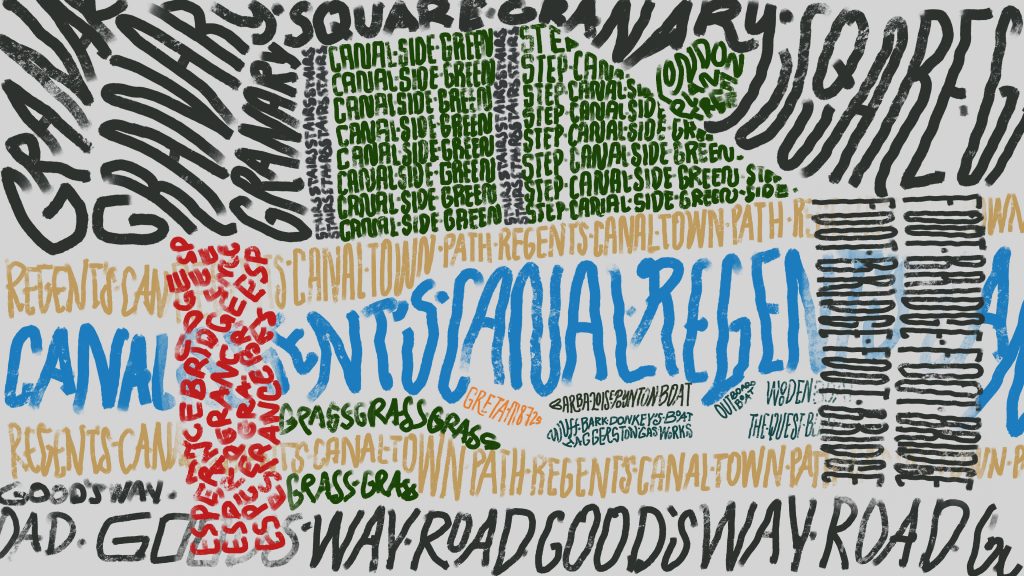
Written Response
Our very first brief was to apply a “Method of Investigating” upon a site of our choosing in a month’s timeframe. The site I chose was situated just next to Granary Square, the so-called Canalside Green Steps. This site is sandwiched between two pedestrian bridges, facing Regent’s Canal filled with Bargee Traveller boats.
This project started out right after reading the passage from “The Street” from, Species of Spaces and Other Places, in which the Author demonstrates an almost overly detailed and descriptive narration of a neighbourhood he observed. After a long, in-depth description, the author gives a practical exercise, instructing us step by step on what to observe, take note, and be inspired leading to the essay he just demonstrated. Some things to look out for was the place itself, the time, the date, the weather, anything that was visible and obvious, and anything that strikes us. Perhaps, the most interesting approach he laid out was for us to sit and take our time, and see things “slowly and almost stupidly”, which to me seemed a serene and child-like approach to seeing things, as if seeing things for the first time. Looking past our biases and presumptions, and creating new interesting connections of the familiar.
Similarly, in the peculiar documentary “The Gleaners and I”, we are brought through a journey of unexpected connections from pickers and gleaners in the modern world, which was wonderfully paralleled to traditional gleaners. These reference material lead me to try to approach ‘observe’ my site as holistic as possible.
In the brief, we had to select visual tools, methods and media to ‘see’ deeply and critically, resulting in unique observations and interpretations, which plays part in ‘creating new information’. The methods I used for this project was:
- Mapping
- Note Taking
- Photographing
- Layering
I started out the week by collecting a messy and hefty amount of photos, loosely organized by proximity on the Mac’s Finder application, pictures of a category close to each other, each group labeled by a folder next to them. I found many interesting hidden features from the Canal. However the collection of photos in itself was not unique and interesting enough. So I had to explore other more interesting visual approaches, while finding a theme that can be extracted from the site to talk about.
I then tried various different iterations in the second week through vector illustrations, light photography, doodling and writing on the photos I took. On a photo of me viewing the canal from where I sat in a first person point of view, I wrote what the surrounding people were talking about in the photo. It created a fun and lively feeling, mirroring what it was actually like sitting there, surrounded by a lot of people spending their sunny weekend on the site.
I then further developed this approach into a map made using only written words, literally describing things of the site from a bird’s eye view. Marking people, wildlife, and objects. Then I further detailed the map using different variables of time, attire, activity, weather, sun light, all using the words and colored and shaped them according to their material.
In conclusion, this project created a more interesting approach of seeing the Canal Side Steps site by having this typographic map represent it. It is a refreshing approach to geography.
However, some improvements could be applied in the information visualized, such as abstract things like jobs, gender, feelings. Also, a combination of digital and organic material could further diversify the semantics. The complexity of it might also defeat its function as a map.
Bibliography:
Perec, G. (1974) ‘The Street’, in Species of Spaces. 1st edn. London: Penguin.
Varda, A. (2000) The Gleaners and I. France: Ciné-Tamaris.
Final Result, Typographic Landscape. Variables based on Time, Weather, Attire, Activity
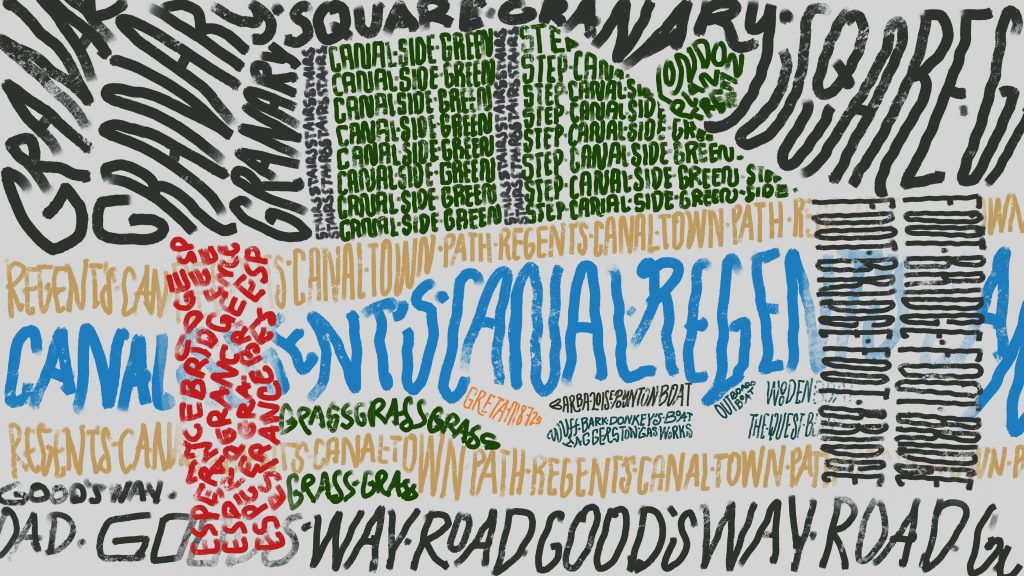
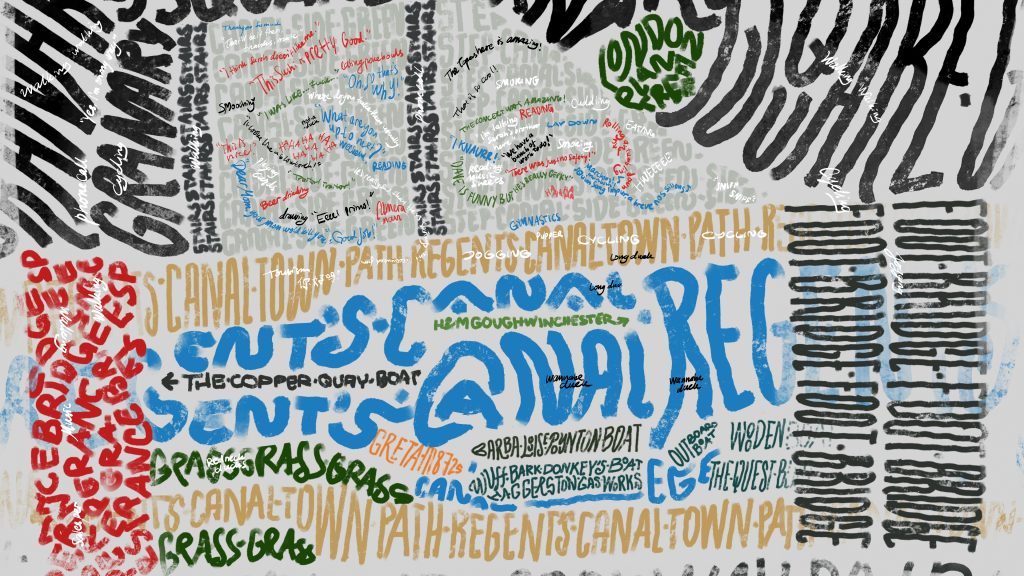
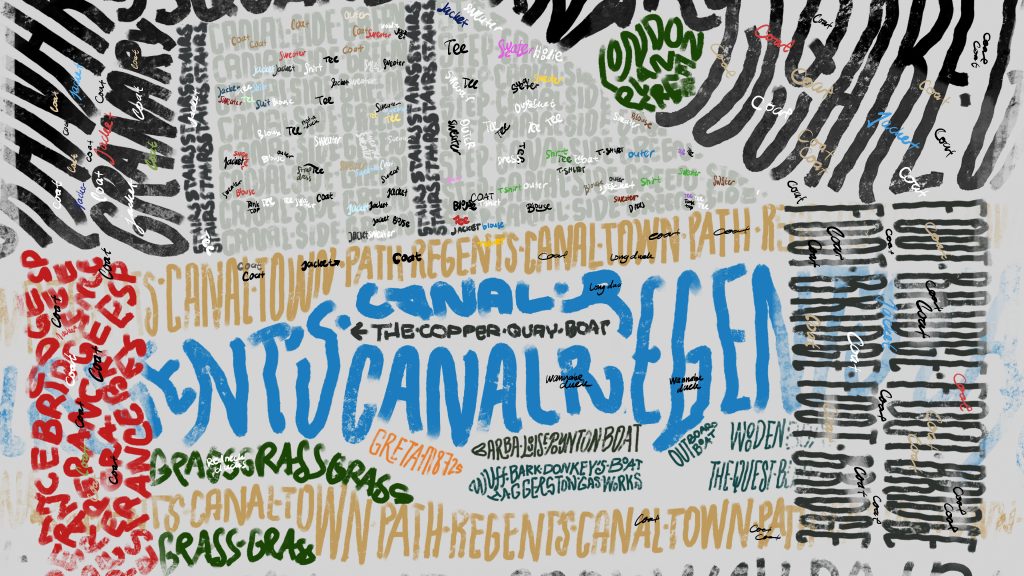
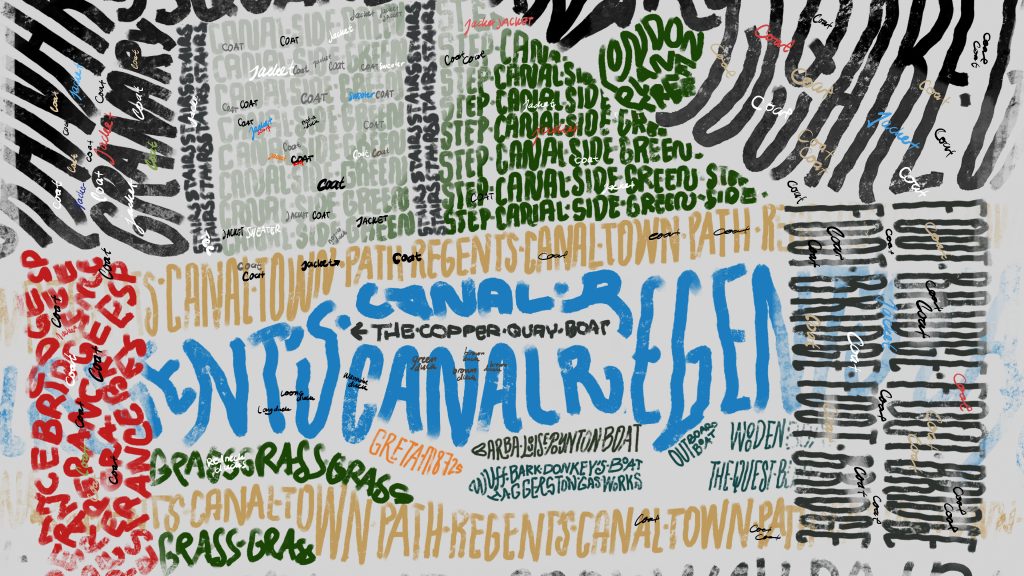
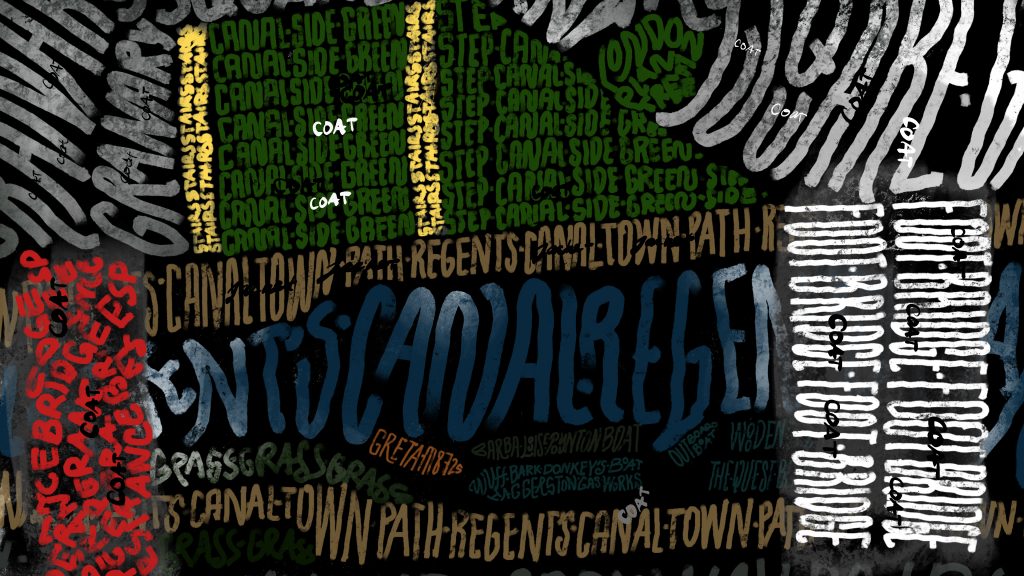
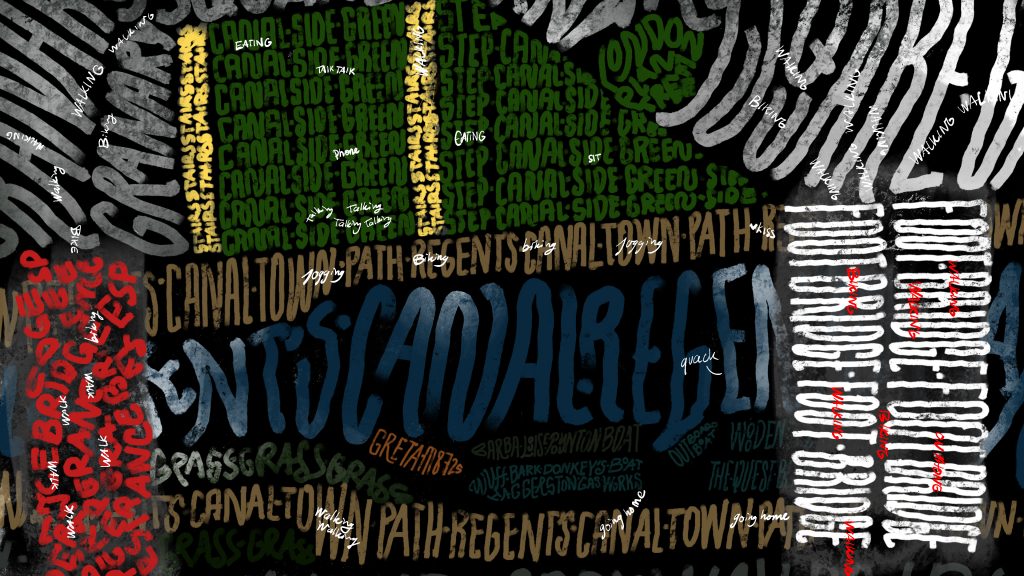
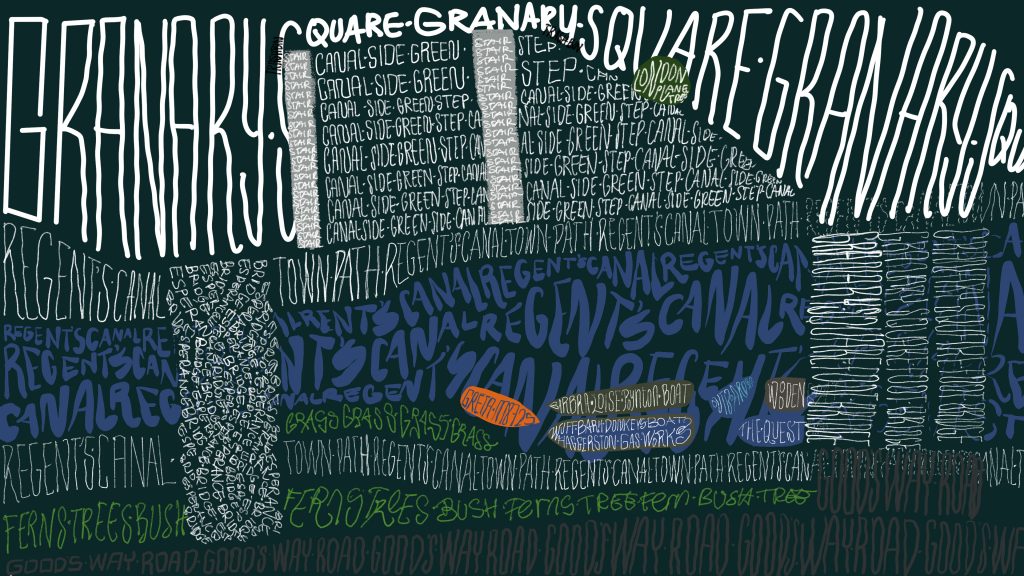
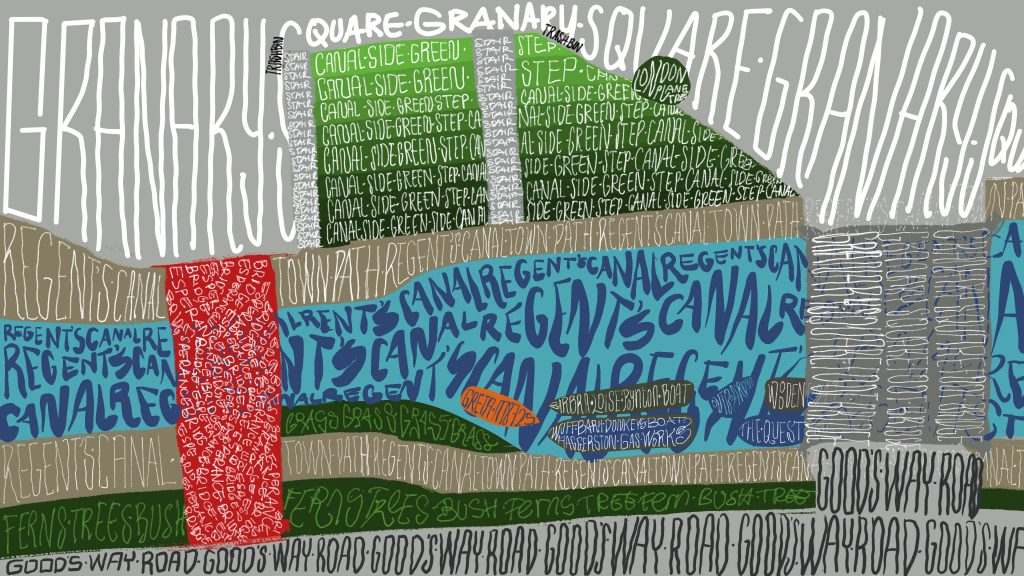
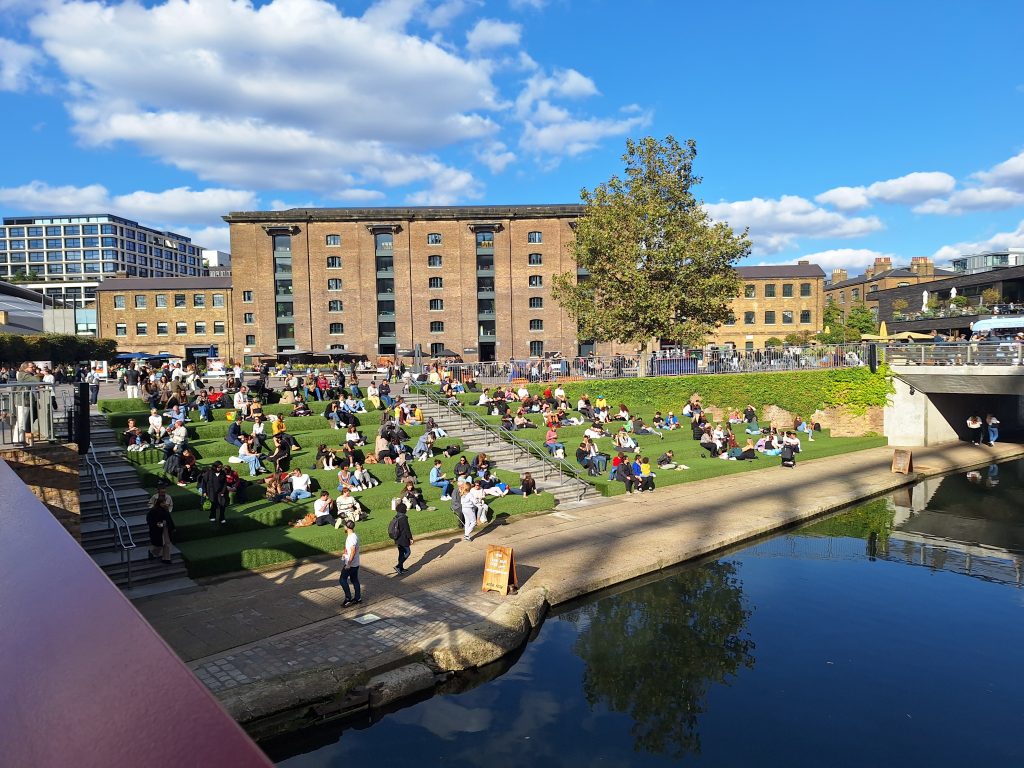
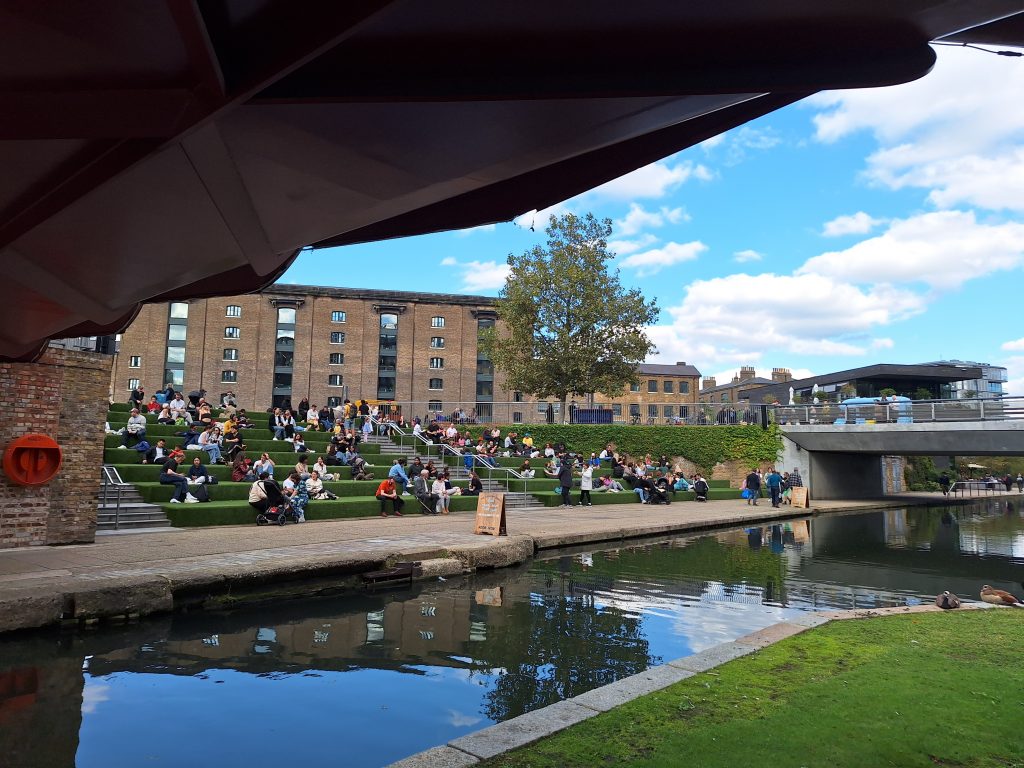
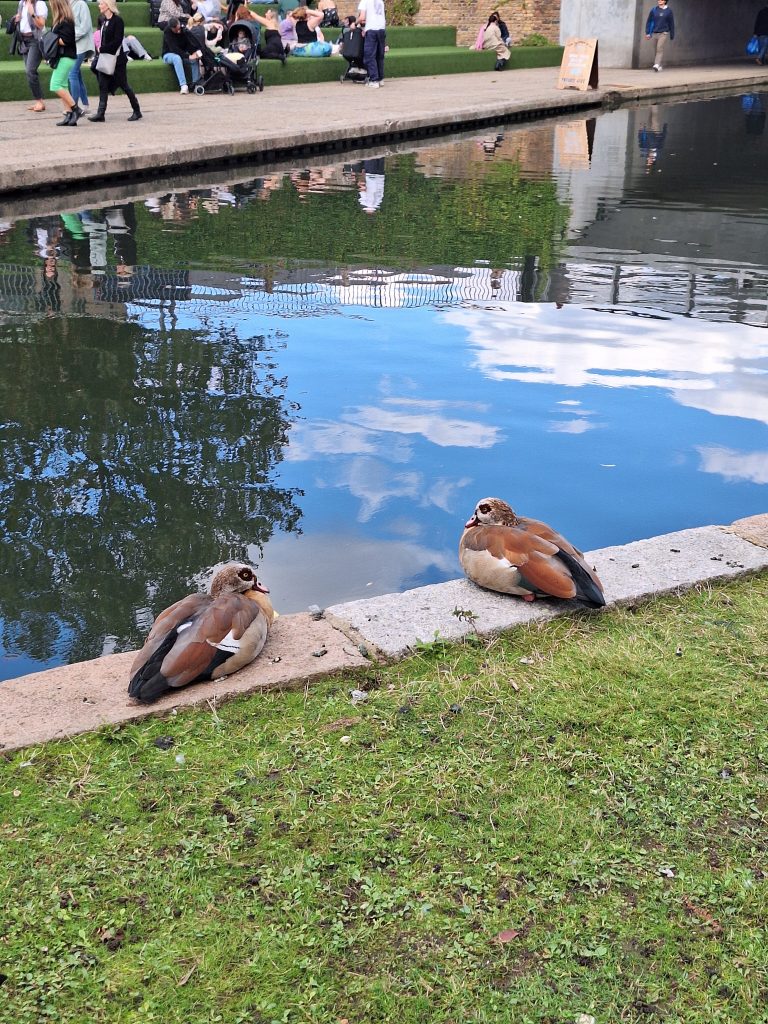
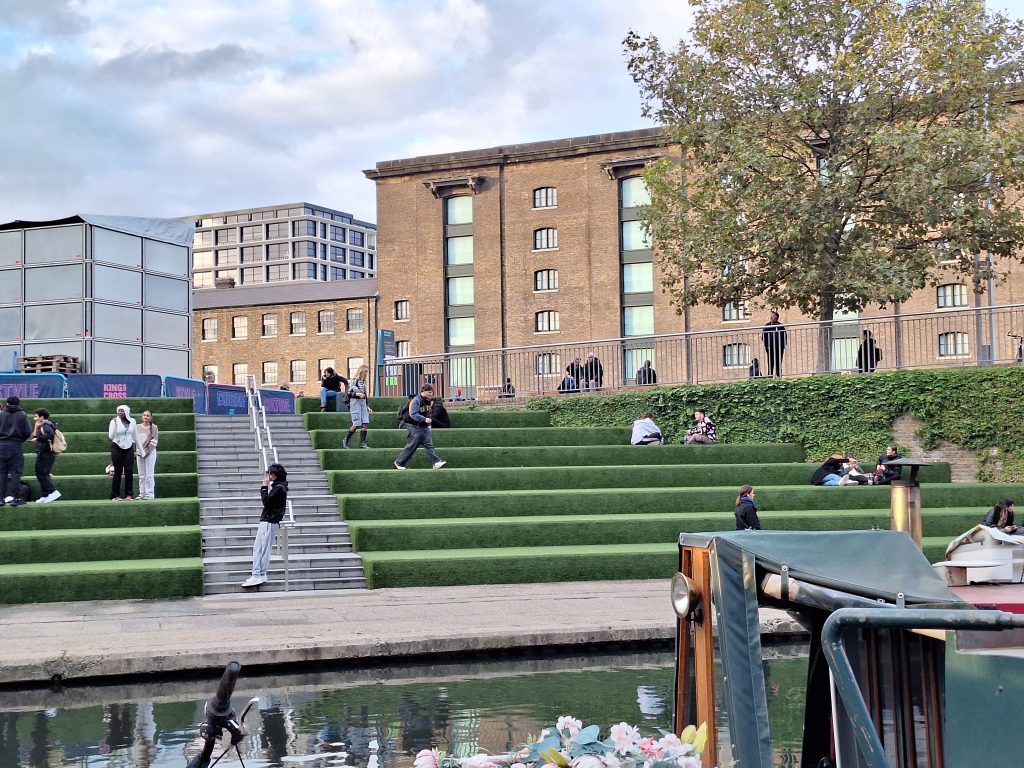
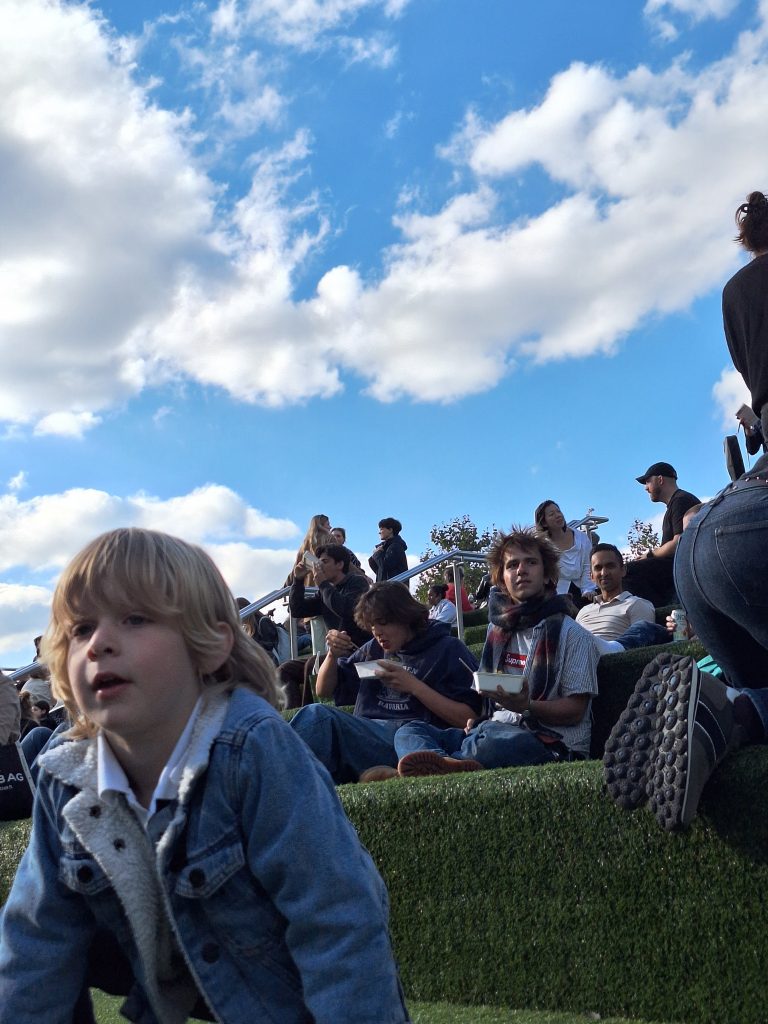
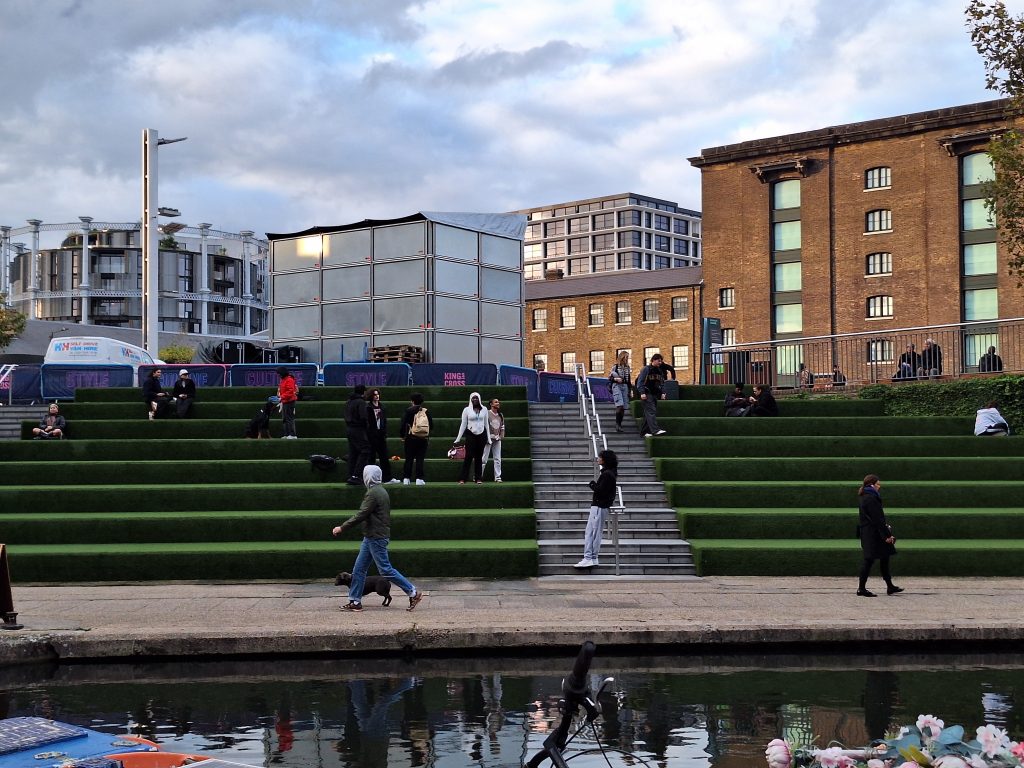
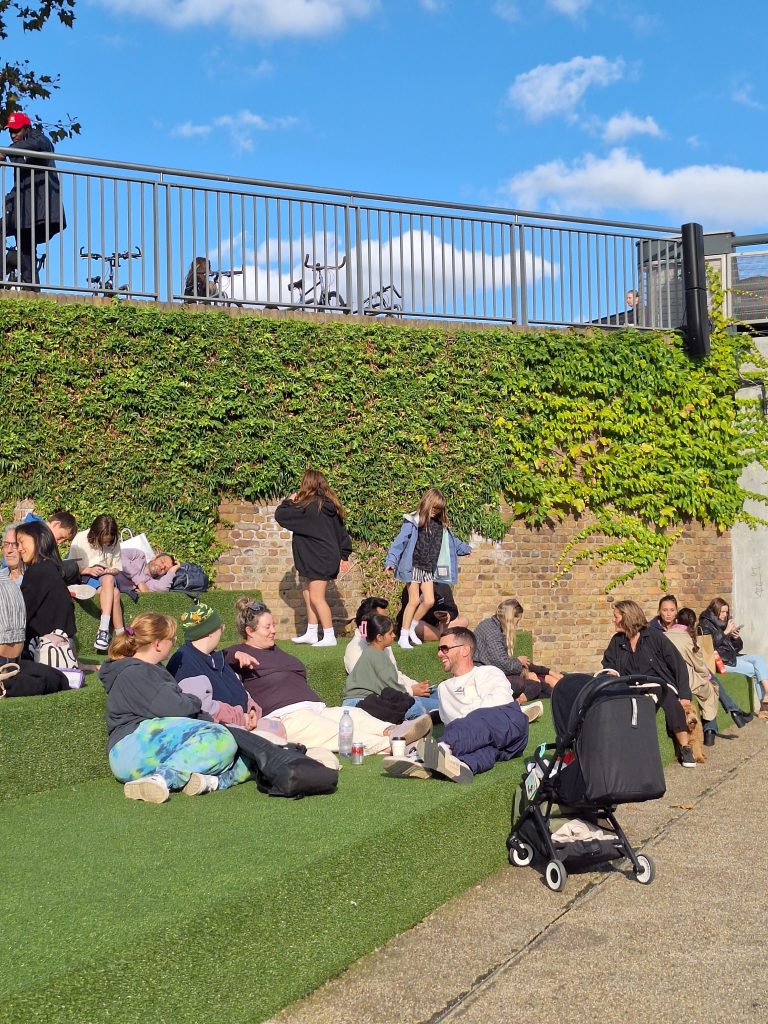
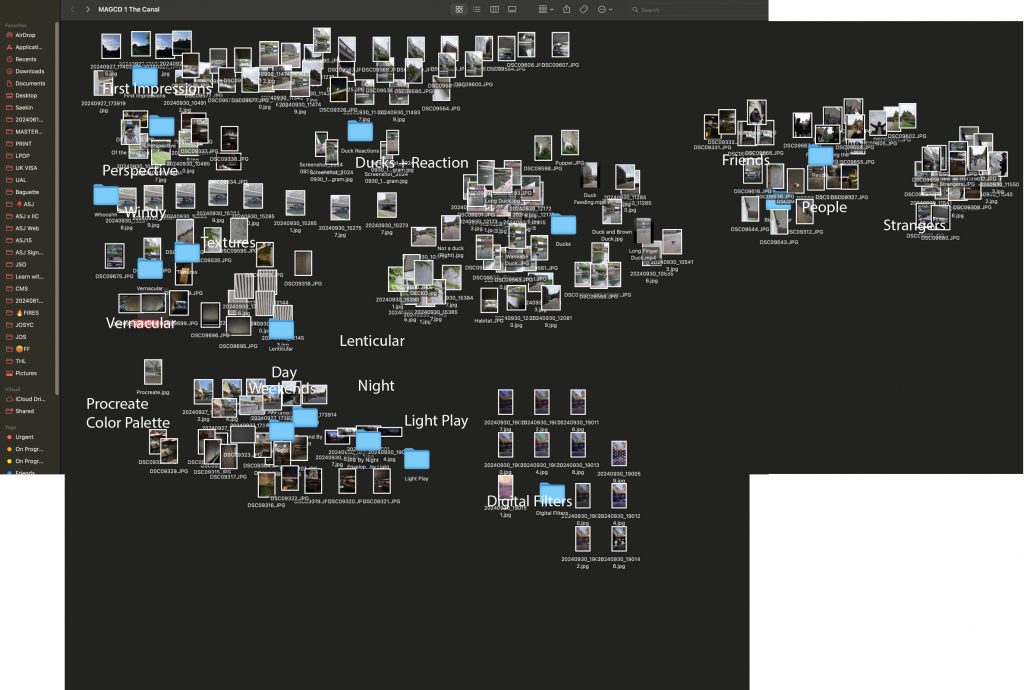
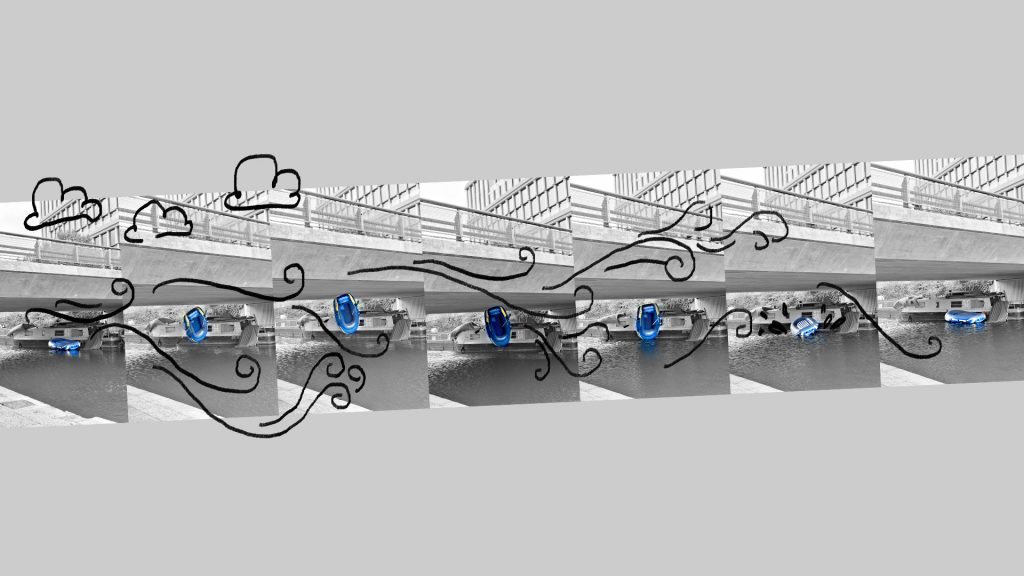
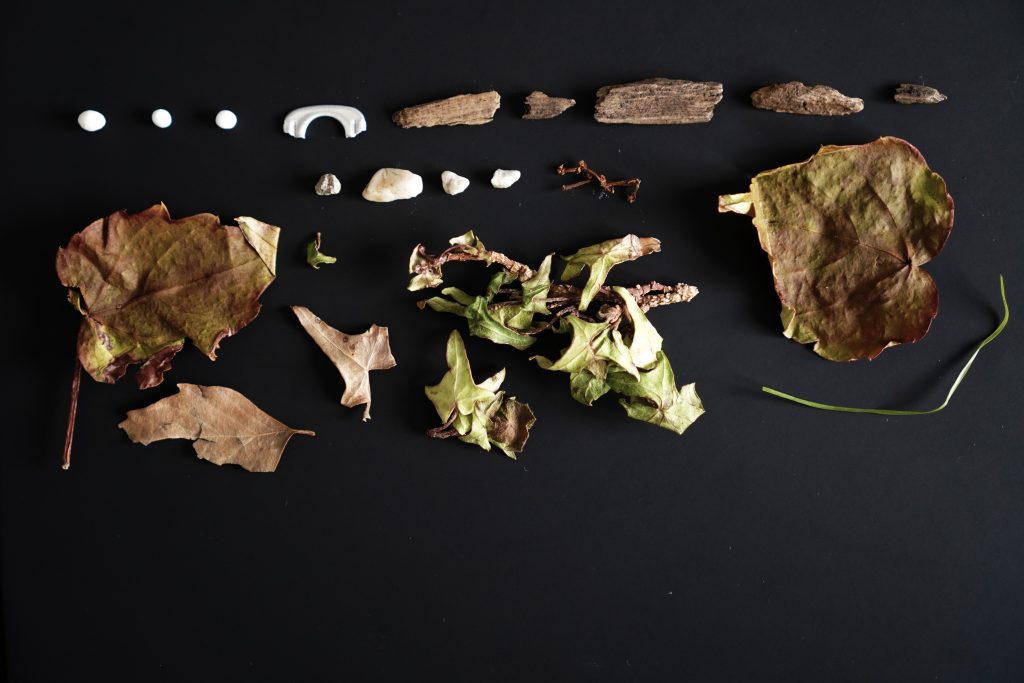
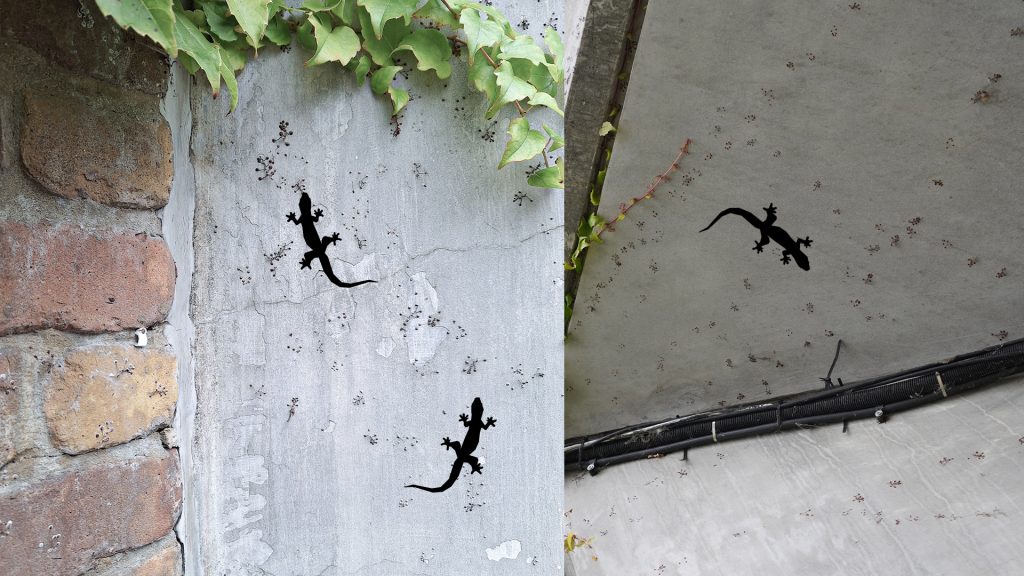
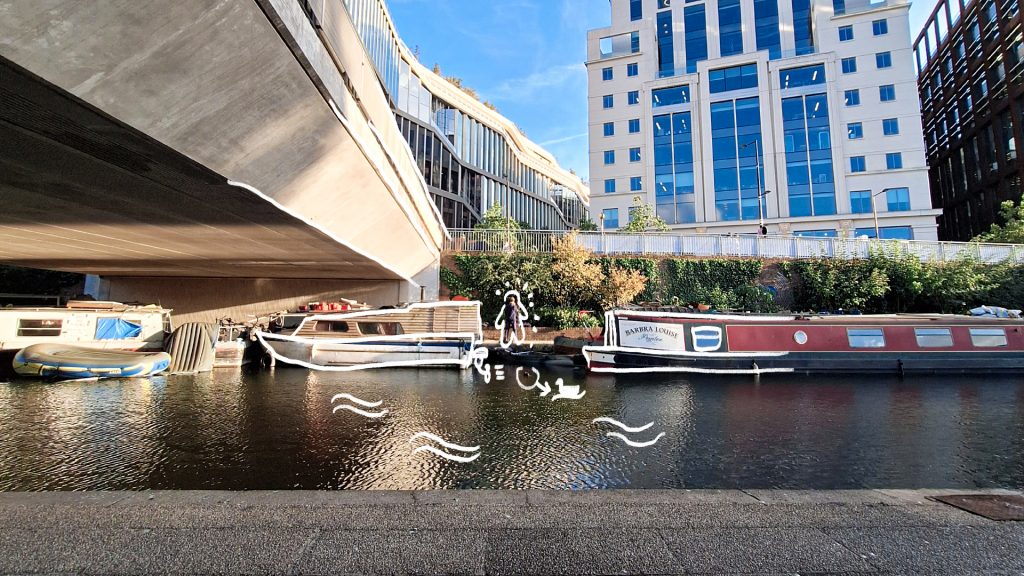
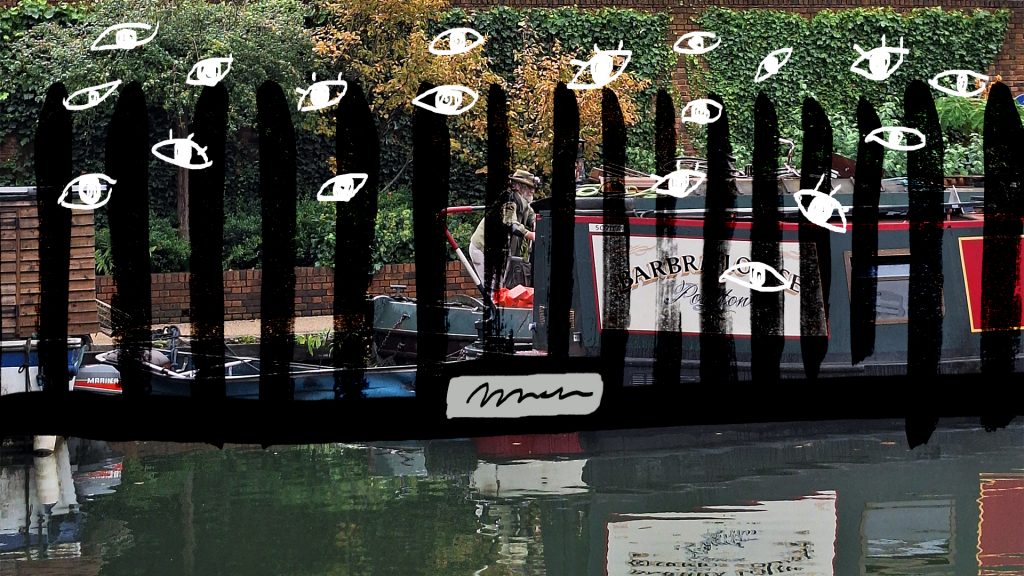


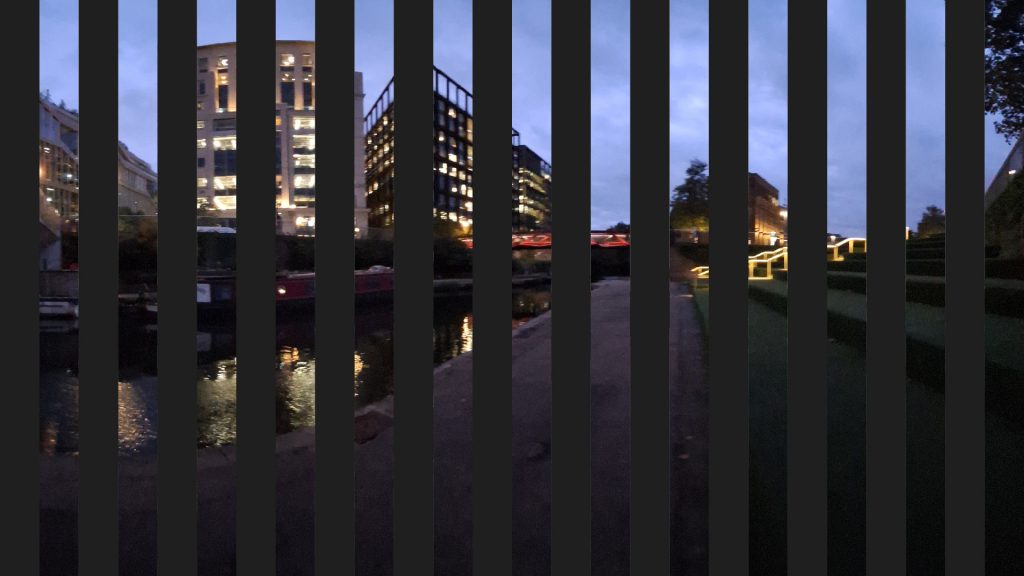
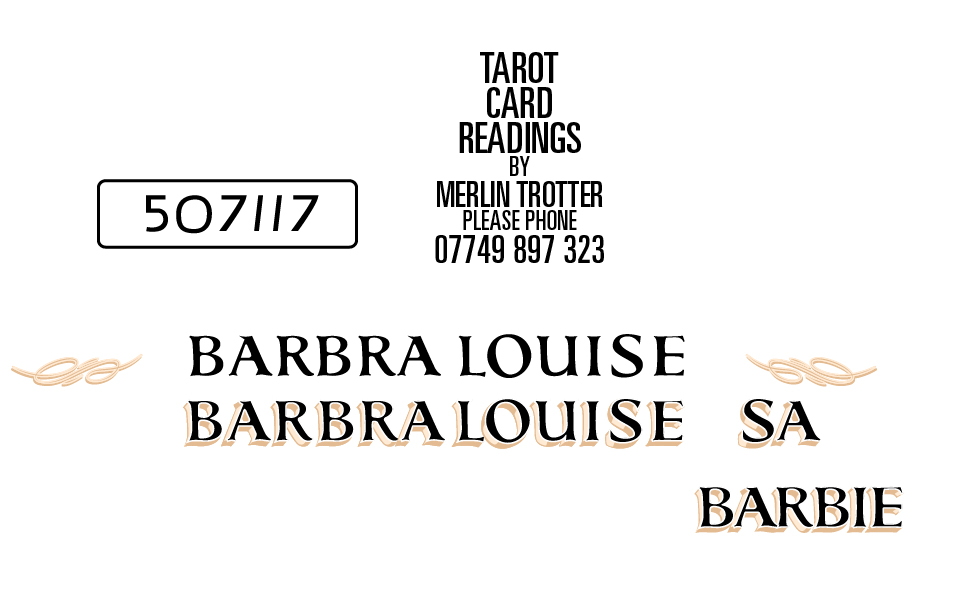
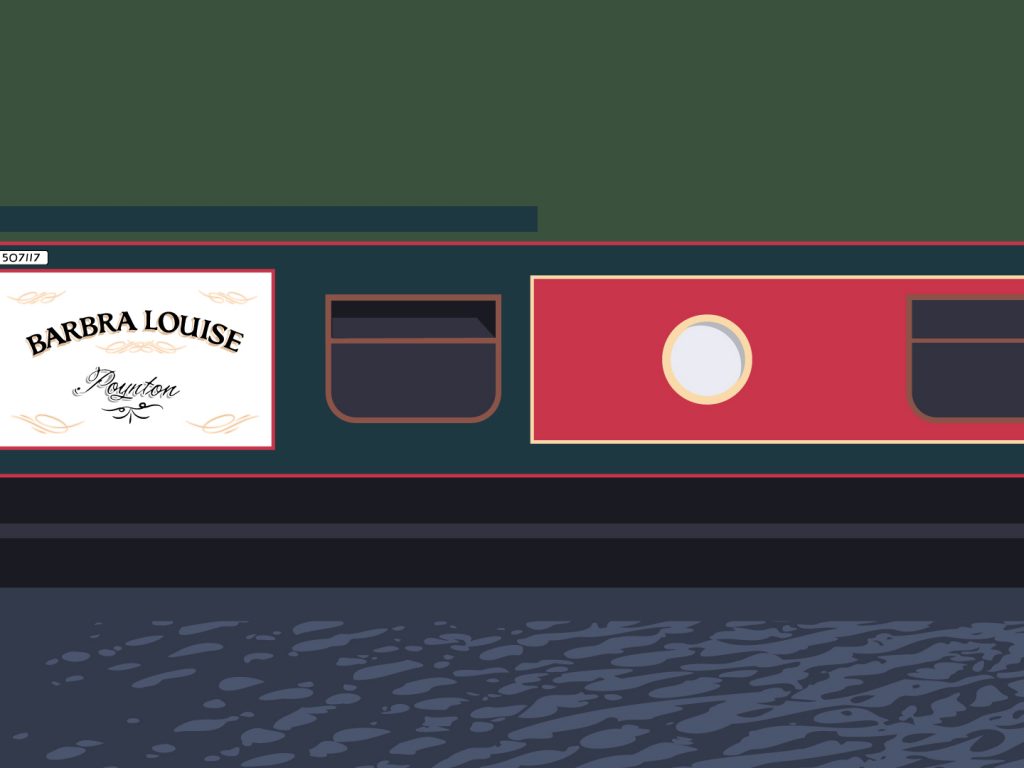
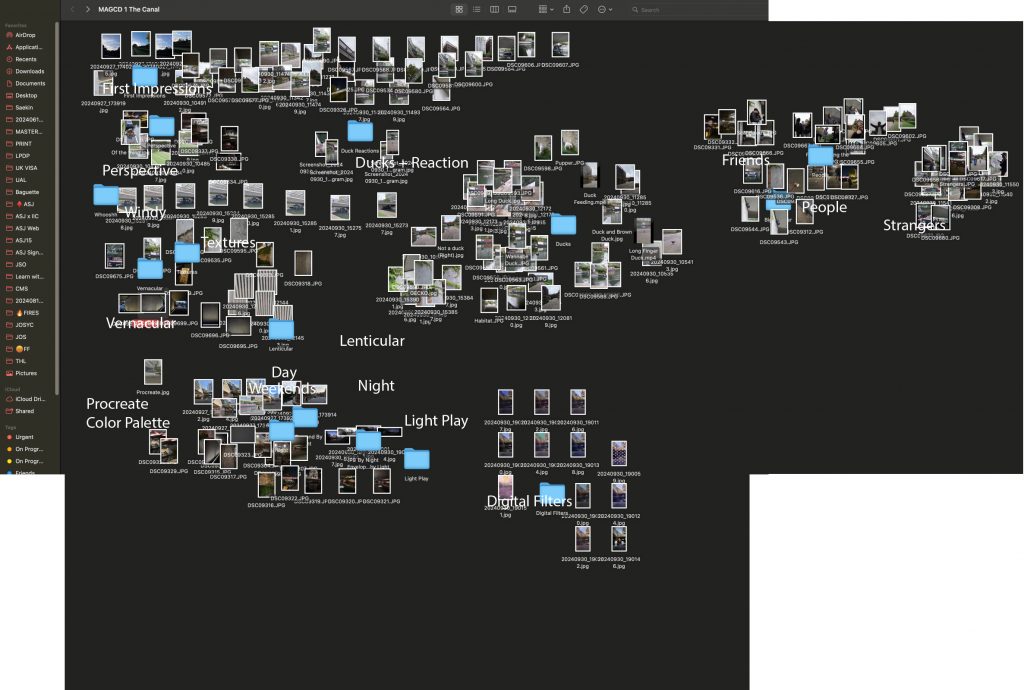
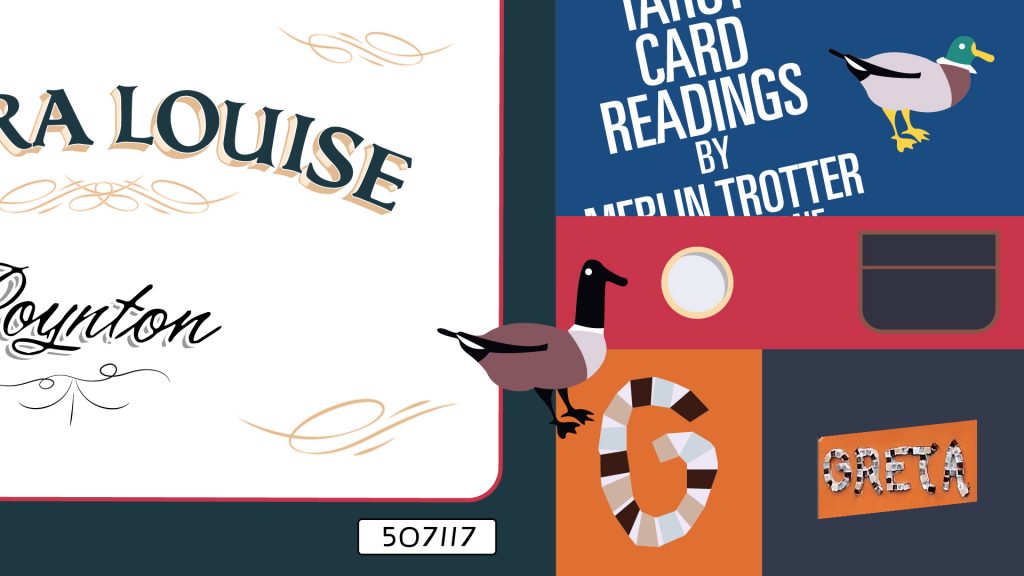
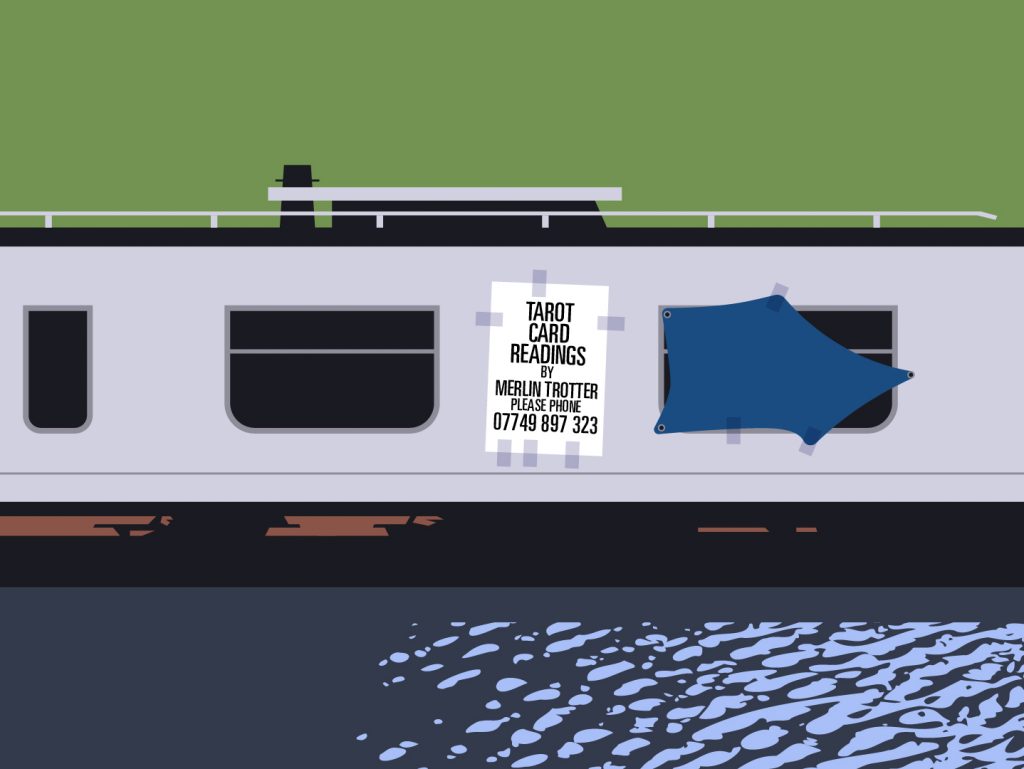
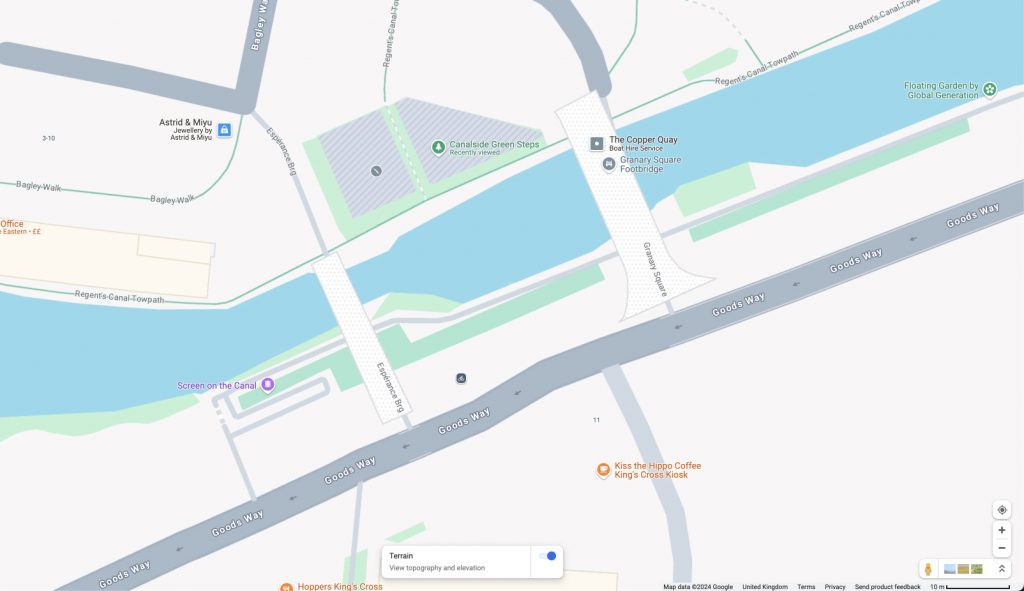
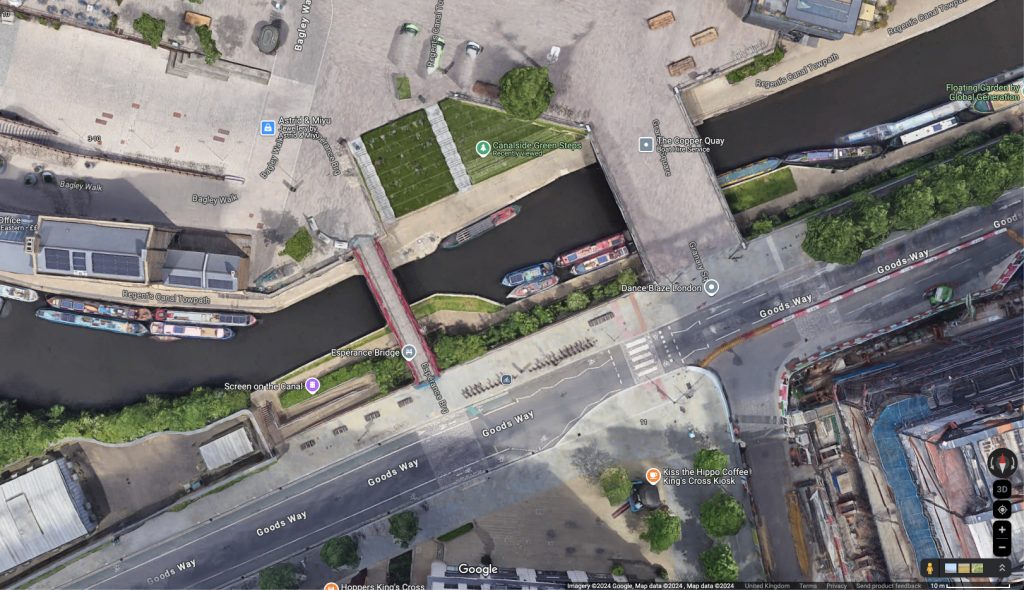
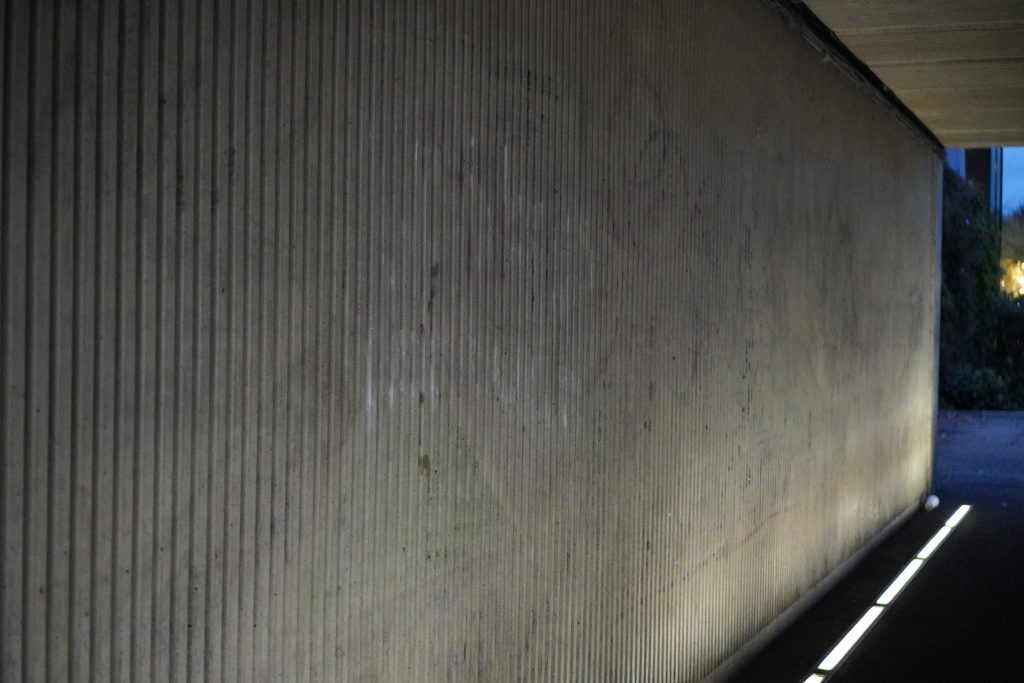
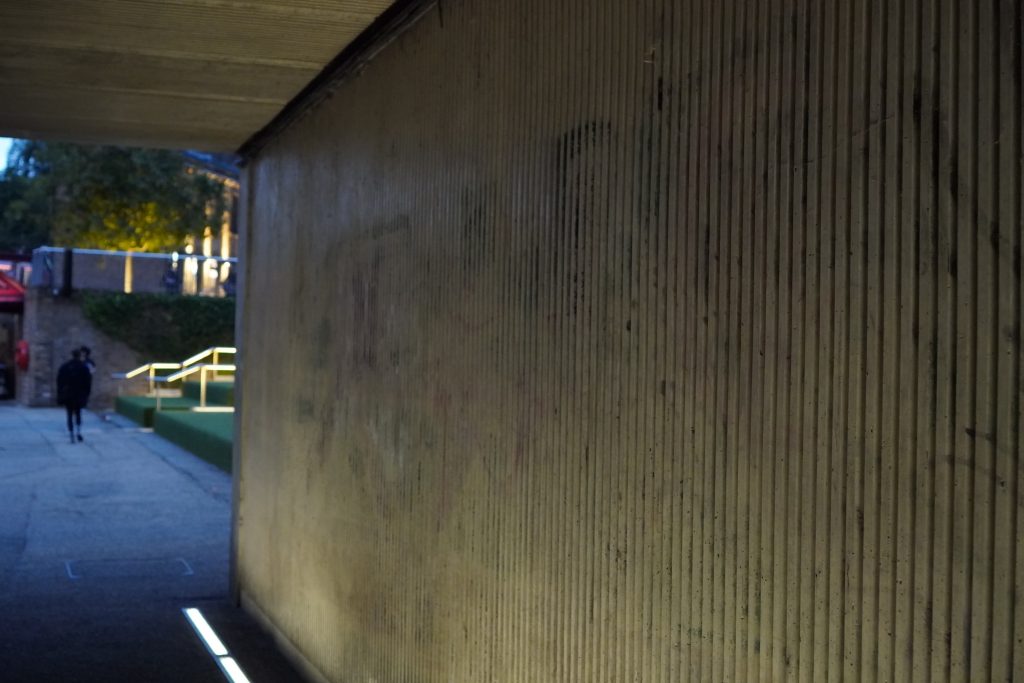
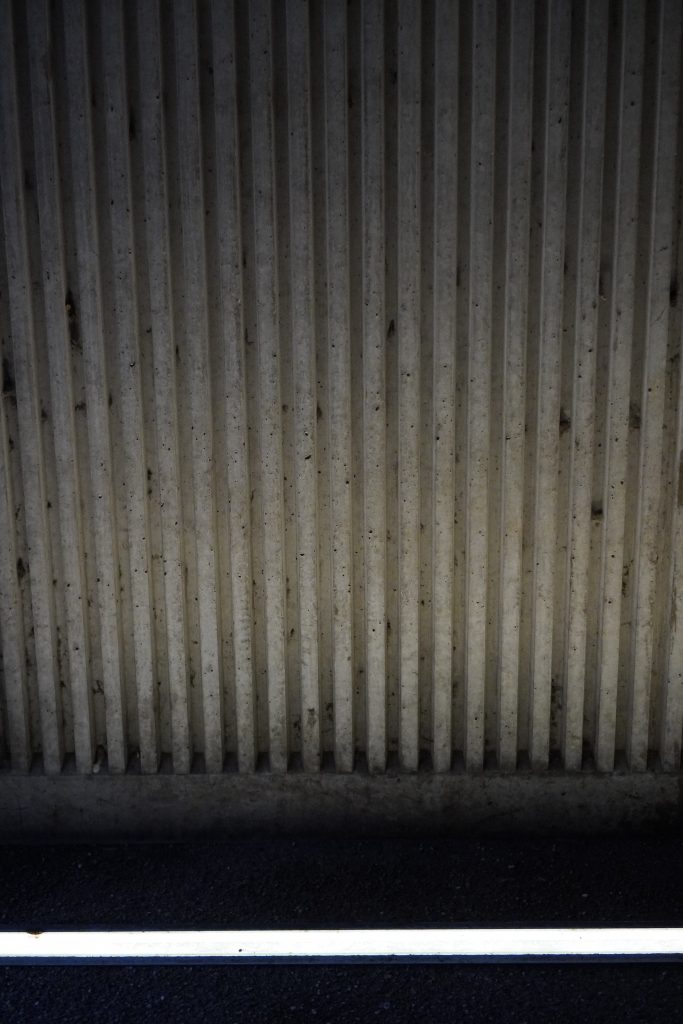
Leave a Reply